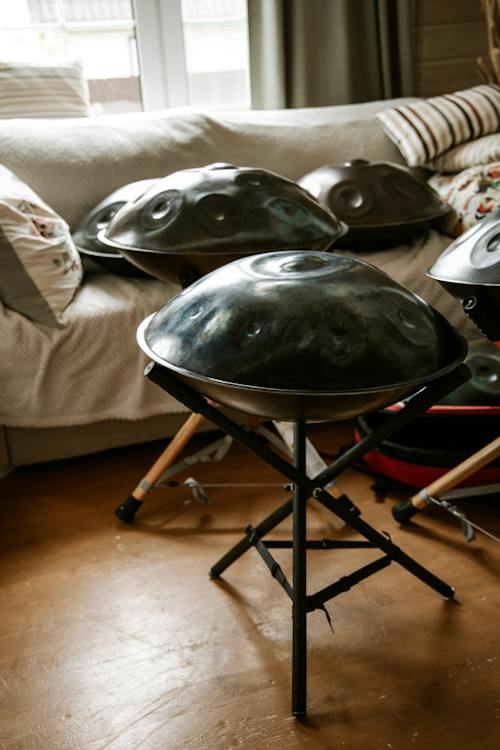Steelpan or also known as steel drum is a percussion instrument that originated in Trinidad and Tobago. Back then, steelpans were built from industrial containers. Today, steelpan manufacturers usually use high-quality steel to construct the instrument. Soloists and small ensembles can play steelpans because they come in different tones, ranges, and timbres. In this guide, we will learn more about steelpans.
How to Play the Steelpans
Musicians who can play the steelpan are called Pannists. They use two to four sticks that are tipped with rubber to play the instrument, and they hit the pan in specific areas so that it can produce different pitches. Pannists sometimes use more than one steel pan to have a broader range of notes available when they are performing.
Speaking of notes, there are different kinds of steelpans available on the market today. These types of steelpans are able to perform specific ranges of notes. That is why if a pannist has a complete kit, he can play an impressive range of notes, which goes from F1 to G6.
When the steelpan belongs in the highest-pitched category, it is considered to be the soprano or high tenor pan, which means that it can hit notes between D4 and F#6.
Where did steel drums originate?
Steelpans are considered to be the national instruments of Trinidad and Tobago. This is the place where the instrument originated and developed throughout the 19th and 20th centuries. During the French occupation, African slaves who are working in Caribbean plants decided to create a sort of carnival festival for themselves because they were not allowed to join the Europeans during the celebration of the carnival. The African slaves called it their festival, the canboulay. And for this event, they would use a somewhat primitive version of the steel pans today. They played music from their African origins to the local tradition.
However, the African slaves were eventually forbidden to play music. But that didn’t stop them from making music, which is why they secretly kept creating percussive instruments made out of pans and other everyday objects. This idea led to the creation of what would late r be known as modern steel drums.
The presence of American soldiers in the Caribbean during the 20th century allowed the Western world to listen to this new musical influence. That is why in just a short period of time, steelpans became popular, and it began to be featured in different hits and songs. Along with its popularity, several instruments were also developed in the steelpan’s evolution, such as the Tamboo-Bamboos, which are tunable sticks made using bamboo wood. These sticks were hit onto the ground along with other sticks so that it can produce sound.
During the late 1970s to early 1980s, steelpan playing was considered a male only activity until it was not perceived as an appropriate activity for women. During this time, the steelpan’s popularity in Trinidad was associated with a violent or rundown crowd, which is why most people this as an inappropriate activity for a woman to be involved in. Aside from this, Trinidad’s culture was also focused on the idea that women should be at home or with the children and that they should not be out in the street playing music with the pan players. However, as steelpans became more popular in the mainstream music scene, women were slowly being accepted to join the street activities, and along with this, stigma with playing the instrument started to subside.

